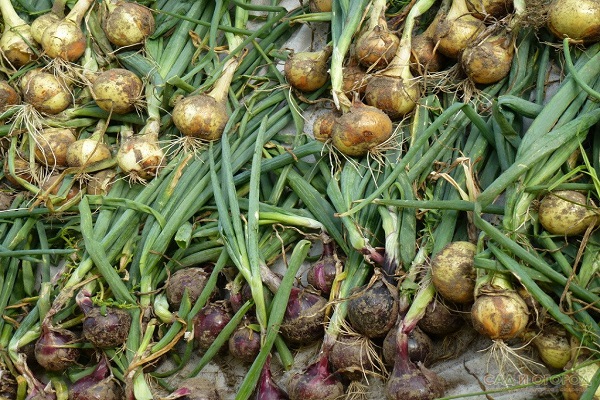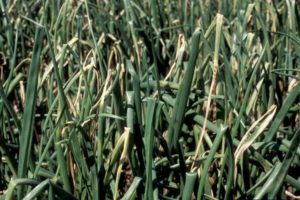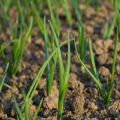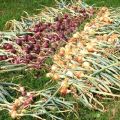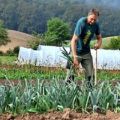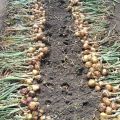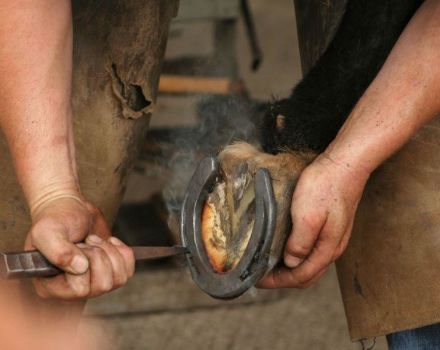When do you need to remove onion sets from the garden and how to store it at home?
Many summer residents determine the period when to store onion sets from the garden experimentally. This is due to the fact that the duration of the ripening of the vegetable may vary depending on the weather conditions, the variety planted, and the provision of certain care. Learning to determine the readiness of the crop for harvest is the main goal of gardeners growing onion sets, since this material will be used in the next season to get turnips. If the bulbs are not mature enough or overripe in the garden, they will become unsuitable for further planting.
How to determine the ripeness of an onion and accelerate its ripening?
Determining when to harvest onions requires knowing the signs that the set is fully ripe. Experienced summer residents say that the sevok is ripe if:

- the feather began to acquire a yellowish tint, dry out;
- planting begins to sink into the soil;
- the onion neck becomes thinner.
When these signs of seed ripening appear, it can be removed from the garden.
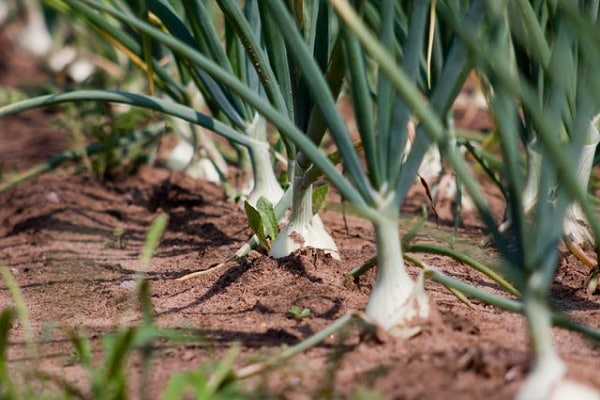
Preparation for cleaning
After determining the date of harvesting the onion, it should be prepared for this procedure. Before harvesting, you should refuse to water the plantings, since it is recommended to harvest the crop in dry soil. Next, you should calculate the date so that it falls on sunny days. If the weather is damp, it is raining, harvesting must be postponed, as the harvest may rot when the raw bulb is removed.
The seeding should be cleaned by digging it out of the ground. This must be done very carefully, since damaged bulbs will not only be poorly stored, but also become unsuitable for planting. Digging takes place along with the feather. The earth is gently wiped off the head. It is impossible to shake off the soil, as damage may appear on the surface of the onion, which will negatively affect the shelf life. After harvesting the entire crop, it should be laid out on the beds to dry.

If harvesting was carried out in the morning, when dew accumulates on the soil surface, the decomposed crop must be covered with a film. If the future planting material was grown in the middle lane, and the weather is cloudy, and sunny days will not appear soon, the onions should be dried under a canopy.
In order for the crop to be well stored, it is necessary to observe other conditions for harvesting it from the garden. This concerns the choice of weather, pruning, watering.
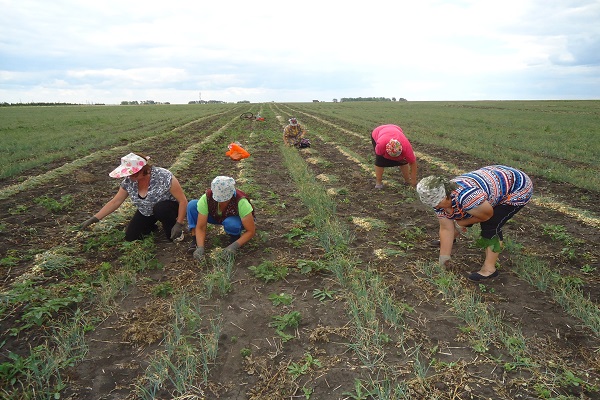
What weather should you start cleaning?
Many summer residents are interested in the question, in what weather to start harvesting sevka? In order for the sevok to have a good keeping quality, it should be cleaned only in dry weather. If sunny days are not planned, it is allowed to harvest a ripe crop in cloudy weather, while the onions will need to be carefully dried.To do this, the dug vegetable can be laid out in the fresh air under a canopy, laid in an attic with good ventilation, or using an oven warmed up to a minimum temperature.
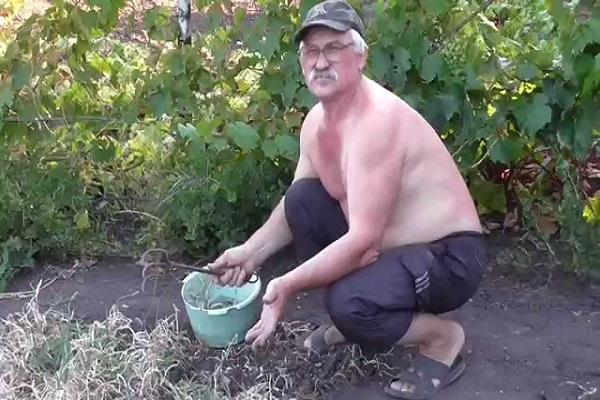
Pruning
In order not to damage the set during collection, its feathers will need to be thinned out before digging. To do this, trim off excess feathers.
How to trim onions after harvesting from the garden? Immediately after digging, the vegetable, along with the green part, is laid out on the beds. The feathers are then trimmed, leaving a 5 cm tip. In addition to feathers, roots are also trimmed. Cropped and dried crops can be stored in wooden boxes, stockings or tied in braids.
There are several ways to weave onions, each of which is suitable for storage and setting. In this case, you should trim, leaving leaves 8-10 centimeters long.
Some summer residents do not cut feathers until late autumn, winter, but this will only complicate the storage of the crop, reduce its keeping quality. Therefore, trimming the feathers and roots is required immediately after harvesting the seed from the garden.
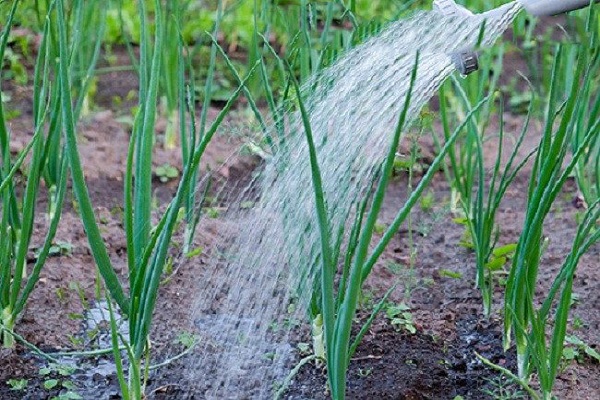
When to stop watering?
To bring the ripening period closer to the hand, it is required to stop watering a few days before the start of the harvest. If the seedlings are grown in the middle lane, watering should be abandoned in the last decade of July. At this time, the aerial part of the seedlings is formed, and in the absence of irrigation, the process of bulb growth is activated.
This feature is due to the fact that when the soil is moistened, the bulb directs all its forces to the growth of greenery, and plunges the head into a state of rest. If the soil dries up, the processes are reversed. In other areas, it is recommended to stop watering seedlings 2 weeks before harvesting.
When the bulbs are actively forming, they will release arrows that need to be removed. To do this, the arrow is cut at the root. Otherwise, the harvested crop will not be saved until the next sowing season.

Cleaning times
To determine the timing of harvesting a seed, it is necessary to take into account the average period of its ripening, which is equal to 70 days. Most often, onions ripen in August-September. Also, when determining the timing of harvesting onions, the planting time, the peculiarity of growing plantings, affects. It is also required to take into account the region in which the onion was grown.
In the Urals or Siberia, there is no way to predict summer weather. If it is hot, the onion will ripen on time, and if it is cool, it will take longer to ripen. In these regions, the heads should be dug out after the green part of the plant has dried, its neck has thinned.

When these signs appear, you need to harvest within 1 week, if you skip this period, the plant will form new roots. Such material will not be suitable for storage. If you start harvesting earlier, the husk will not appear on the seed, and the neck will not have time to become thinner. Such seed will not be suitable for further planting.
Moon calendar
Some experienced summer residents are sure that the best way to determine the optimal time for assembling a set is to use the lunar calendar. It helps to calculate favorable lunar phases for harvesting in relation to seedlings and other garden crops.

In the absence of a lunar calendar, some summer residents recommend contacting the luminary himself. So, you can get a good harvest if you start harvesting seedlings on a full moon. Such harvesting allows you to endow the vegetable with the greatest nutritional value.
Moreover, any day indicated in the lunar calendar should be dry, if it rains, it is recommended to postpone the digging until the next favorable date.
Country life hack
Some gardeners are convinced that keeping quality depends on how the seed was dug.There are a number of life hacks that allow you to accurately extract the crop from the soil, preserve its quality and shelf life:

- It is best to dig up the vegetable in the morning, since it is at this time that the soil is as loose as possible.
- Use forks to avoid damaging the heads. If the bulb is damaged during harvesting, it should be consumed.
- It is allowed to pull the onion out of the soil, open ground only when rain has passed before harvesting, softening the soil. When a vegetable is pulled out of dry soil, the stem breaks off, which causes the head to quickly rot.
- For growing sets, you should use the best varieties with good keeping quality. Hybrid varieties are not suitable for seed production.
- You can harvest the turnip before the first frost, which occurs in different regions in August-September.
Subject to the listed rules, the harvested seedlings will be perfectly stored until the next sowing season. Also, special attention is required to be paid drying onions.
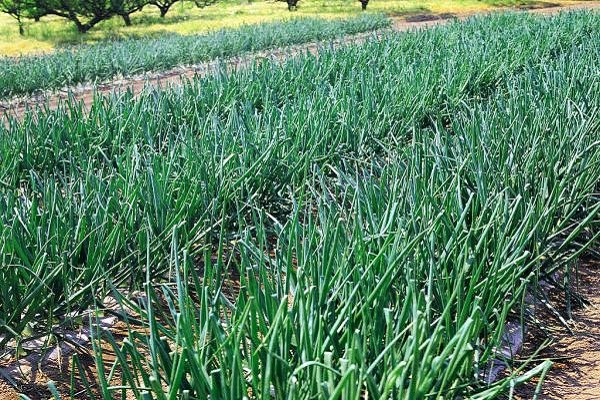
Drying
To answer the question of how to store onion sets before planting, you need to know not only its storage methods, but also the preliminary preparation, which consists in drying. Drying of the seed takes 2–3 weeks. During this time, the bulbs absorb all the nutrients from the green mass, and their scales dry out.
Drying of seedlings consists in spreading the crop on a dry surface in a thin layer. From time to time, the onion is turned over so that it dries evenly.
In order for the bulbs to dry, several drying steps are required. The first of these is drying in the garden. This stage only lasts 1–2 days. Then the crop is laid on the veranda, attic or in another ventilated area. The onion is stored there for 2 weeks. After that, the roots are cut off, the feathers of the onion are cut off - the feather and roots are thrown away, and the onion is sent to a room with a temperature of 25-30 degrees for a couple of days.
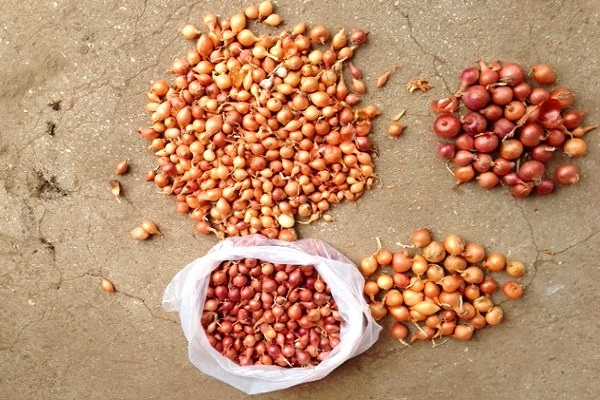
What to do if the seed is rotting? In this case, the spoiled bulbs should be thrown away, and the rest of the crop should be dried in the oven at 40 degrees for several minutes. Such processing will increase the keeping quality of the set, destroy all pathogenic bacteria, and the onions can be stored until the next sowing season.
